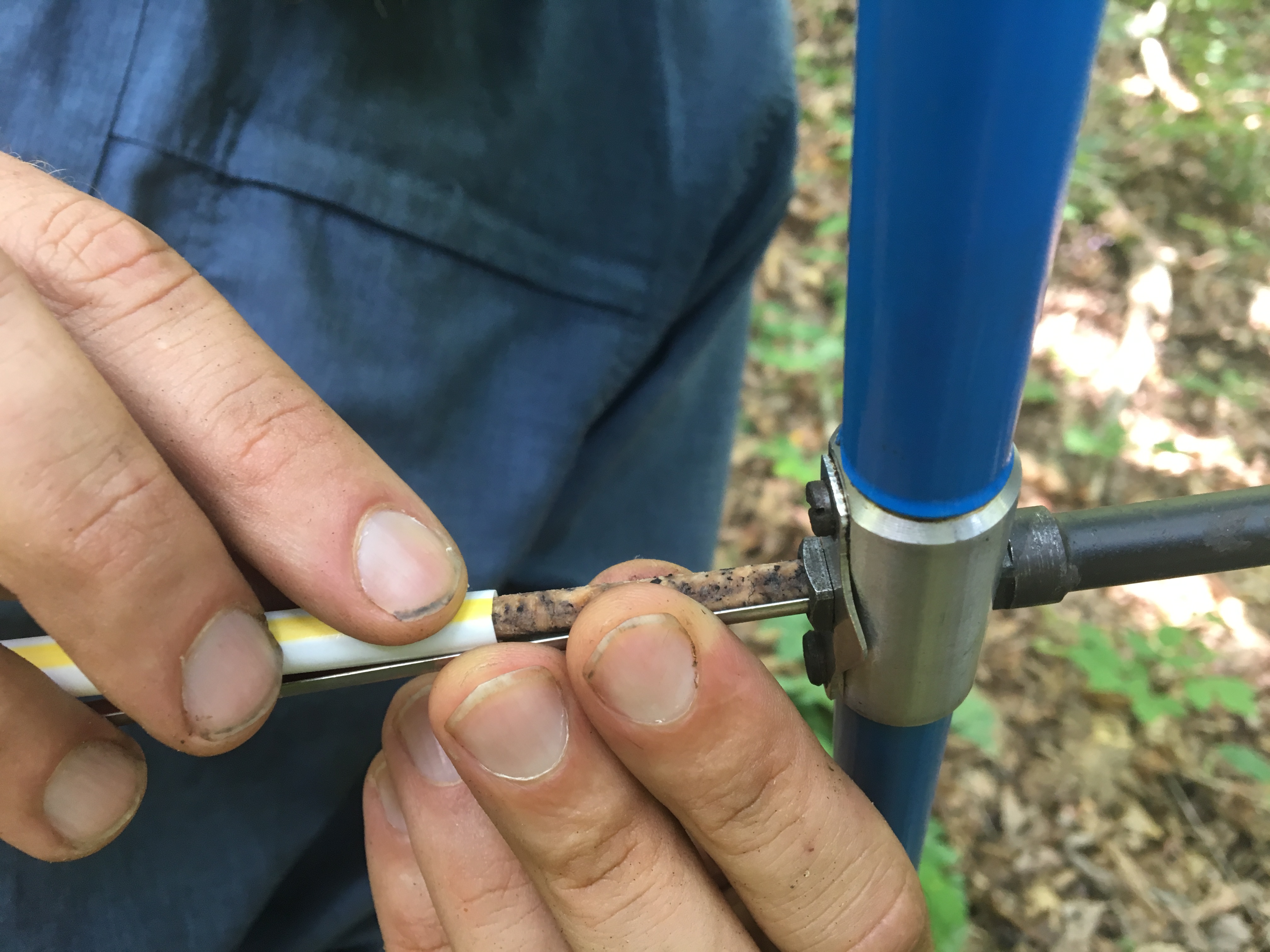MountainTrue Defends Old-Growth Forest in Jackson County

By Josh Kelly, Public Lands Field Biologist
On the steep, rocky slopes of Savannah Ridge in Jackson County, there is an ancient oak forest that has weathered centuries.
The oak trees are short and generally twisty; not worth much at the sawmill despite being hundreds of years old. These trees have stood, well-protected by the rugged terrain and their scant commercial value, even as the surrounding forests were logged in the early 20th century. Now, they are among the oldest and rarest trees in the Eastern United States.
Less than 0.6% of forests in the East qualify as old growth. In the Blue Ridge Mountains, we are blessed with a greater percentage, but still less than 5 percent. These old-growth forests hold a host of values: wildlife habitat, scientific information, undisturbed soils and genetics that have stood the test of time. Because these trees are so rare, so ecologically valuable and take hundreds of years to form, MountainTrue believes that existing old growth on public land should be protected from logging.
The Forest Service is not required by the current forest management plan to evaluate the old-growth condition of the stands they identify for timber sales. That’s where MountainTrue comes in. Our Public Lands staff reviews all timber projects in Nantahala and Pisgah National Forests for the presence of old growth.
We had a victory in protecting old growth just this past year. The story begins in 2016, when the Mossy Oak timber sale was put forth for public comment. The Mossy Oak Project included 235 acres of proposed logging in 10 separate units spread out over 9,500 acres. Most of the project made sense in balancing ecological and economic considerations, and the logging was designed to benefit species like deer, grouse and golden-winged warbler. However, two of the units caught our eye. Unit 6 overlapped with an important natural area identified by the NC Natural Heritage Program, and Unit 7 – part of that same ancient oak forest on Savannah Ridge in Jackson County, with the short, twisty trees – looked like a potential site of old-growth forest.
It turns out that Forest Service records indicated that Unit 7’s trees are, on average, over 150 years old. To increase the size of the unit, eight low-value acres of the ancient forest had been packaged with eight acres of younger, higher value forest. Beginning in April 2016, MountainTrue notified the Forest Service that we had identified old growth in Unit 7 of the Mossy Oak Project.

Counting the rings from the core sample allowed us to determine that this tree is part of an ancient old-growth forest.
After over a year of input, a visit to the site with the Forest Service and a formal objection to the Forest Supervisor, the eight acres of ancient oak forest from Unit 7 are no longer on the chopping block. Instead, the Forest Service and MountainTrue will work together to protect and enhance the old-growth characteristics of this small but invaluable forest. We hope that in the future it will not require such persistence to protect old growth on public land, but if there’s one thing MountainTrue has in spades, it’s persistence and love of the land.
In that spirit, we are working to ensure that old-growth forest is far more than an afterthought in the new Nantahala-Pisgah Forest Management Plan, which is due to be drafted in early 2018. We’ll fight to make sure the new plan has language to make the protection of existing old-growth forest just as important as creating young forest habitat through logging.
